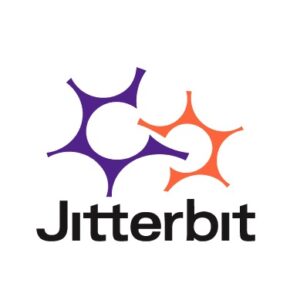By Tom Ainsworth, Head of Customer Engagement, Jitterbit

Despite our best hopes, 2021 is shaping up to be another year of continued disruption. Many organisations in the financial industry will have moved heaven and earth over the last year to meet seismic changes in customer needs and behaviours.
Some of those innovations will have been on the digital transformation roadmap well before the pandemic. Others will have been quick fixes, often delivered by IT teams under enormous pressure and in record time.
This year, then, is the time for financial organisations to take stock and solidify new ways of working while ensuring they are responsive and resilient to the ever-changing business environment. Here are four trends already emerging in how IT teams are planning to meet the challenges that undoubtedly still lie ahead in 2021.
1. Embrace low- to no-code
Moving to a low- or no-code methodology helps an organisation address the everyday tactical challenges that arise in a fast-moving business environment. Let’s look at the example of a team that has yet to invest in low- or no-code solutions. They might be using an older, incumbent piece of legacy software, where only one or two developers internally know the tool. When a tactical requirement arises – say, a change to an existing process or workflow – it goes into a backlog until one of the developers who is familiar with the legacy software has availability to custom code a solution. Immediately, there’s a bottleneck in the business.
Contrast this with a low- to no-code environment, where these sorts of integrations are ‘plug and play’, often using pre-built templates. Updates and integrations can be managed by business analysts as well as any developer so tactical requirements end up being shipped much faster. And we see how that trickles down through the entire organisation. In the financial services, this is mission-critical because there’s a high dependency on delivering on the promised customer experience and maintaining customer confidence. People often ask me when’s the right time for them to invest in low-code. My answer is, assume you need low-code solutions, don’t wait for red flags in the business.
2. Face up to your technical debt
 Oftentimes, IT teams will respond to a red flag in the business with a quick fix – something which typically incurs an amount of technical debt. A bit of custom code or a work-around process which an individual on the team hacks together, usually under pressure of time. And, in a team without a low-code culture, this can seem a reasonable way forward. But in six months’ time, when that employee leaves, the knowledge about that fix leaves too. Suddenly there’s a black box in the business which now needs ever more quick fixes to work around, accruing yet more technical debt.
Oftentimes, IT teams will respond to a red flag in the business with a quick fix – something which typically incurs an amount of technical debt. A bit of custom code or a work-around process which an individual on the team hacks together, usually under pressure of time. And, in a team without a low-code culture, this can seem a reasonable way forward. But in six months’ time, when that employee leaves, the knowledge about that fix leaves too. Suddenly there’s a black box in the business which now needs ever more quick fixes to work around, accruing yet more technical debt.
At Jitterbit, we recently onboarded a new customer from the financial services. It’s a challenger bank where this kind of hidden technical debt suddenly became apparent during the pandemic’s first lockdown. Calls to their call centre increased and it transpired that several ‘fixes’ in the business could not scale to meet demand. The technical debt they’d accrued over time had to be paid back immediately and without warning.
This customer came to us because firstly they needed an immediate solution – and secondly, because they realised they could have avoided all this pain in the first place. An integration platform-as-a-service would have solved their tactical challenges without the need for custom code workarounds and all that associated technical debt.
3. Work towards becoming vendor-neutral
Organisations in the financial services are, in the main, on board with the need to become more vendor-neutral. It’s a fast-moving vendor marketplace and Technology and Information leads want the agility to work with the best-of-breed for any given aspect of their stack so their organisation can stay competitive and resilient. Contrast that to ten years ago, when CTOs wanted monolithic partners who could provide hardware, software and services in order to remove the integration complexity of having multiple vendors in play.
In a sense, the monolithic approach did the job. But in return for greater operating simplicity, buyers had to accept a ‘middle of the road’ type standard of tools and services – and less ability to respond quickly to changes in their business environment. With the rise of integration platforms and pre-built templates, CTOs today no longer have to make a choice between the quality of their solutions and the complexity of managing them. Integration platforms are like a connective layer on which to build. Having this foundation means it’s simple to integrate multiple best-of-breed vendors and manage hundreds, even thousands, of API connectors. This is the key for any financial organisation wanting to stay competitive, responsive to customer needs and resilient to change.
4. Prepare for hyper-automation
The way we work is changing. Not only has remote working swept the world. Increasingly, organisations are realising that to stay competitive, any task within the business that could be automated should be automated. This creates significant new efficiency gains within the business while at the same time liberating people to focus on more innovative or customer-orientated tasks. Being able to deploy ever-greater automation requires the right technology foundations within a business. If you are starting out on this journey, think of hyper-automation not as a destination but as the technology toolbox you’ll need to make progress.
At its heart, hyper-automation is about data and removing manual processes in the way an organisation gathers, analyses and deploys data. Every hyper-automation toolbox will therefore need to include Robotic Process Automation (RPA) solutions which enable the automatic processing of data. Data Lakes, Data Integration Hubs and Virtual Data Warehouses will help organisations store and process data into information. Analytic tools will allow information to be turned into knowledge, ready for action at every level of the business.
By coupling these technologies with an integration platform-as-a-service, technology leads within financial organisations can focus on choosing the best-of-breed suppliers for their particular needs rather than how they need to be integrated. Many financial organisations are large, spanning investments, insurance, retail and commercial banking and beyond. Because of integration challenges and data silos, the historic challenge has been to derive actionable business knowledge across the entire business portfolio. Hyper-automation now makes a 360-degree view of the whole business not only possible but requisite. Much like the move to digital 25 years ago, the companies that embrace hyper-automation first will be at a distinct ‘first mover’ advantage, seizing a vantage point which could prove hard for competitors to assail.
Tom Ainsworth
Head of Customer Engagement
Jitterbit
